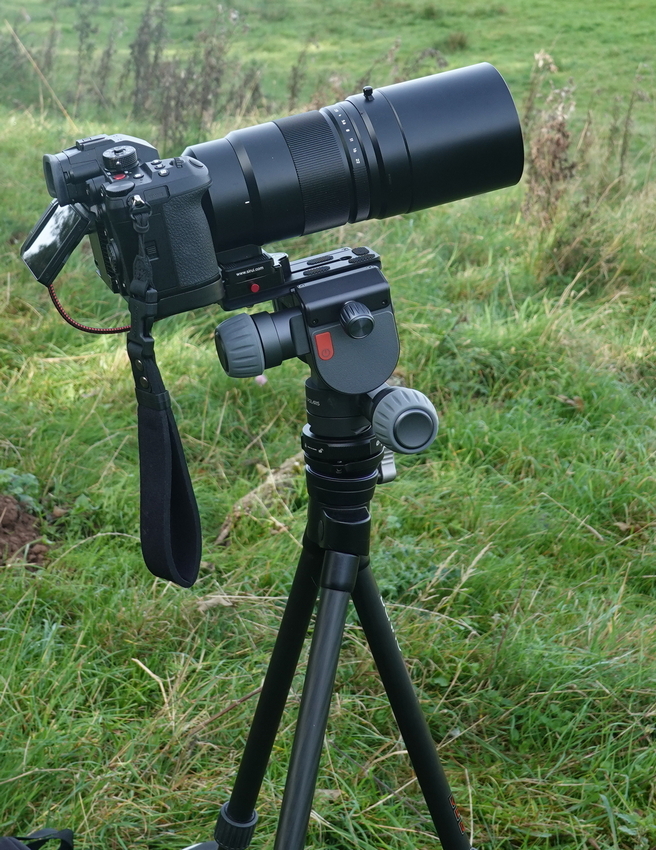I have been taking high-resolution panoramas for many years, and in recent years have been testing and using a number of motorised tripod heads for this. Please see the multi-row panoramas page for the reasons for using a motorised head along with details of ones I have used.
This page provides some background and information about the Benro Polaris motorised mount », along with my checklist which might prove a useful starting point for a new setup.
The Benro Polaris
In 2022 I discovered the Benro Polaris motorised head (1.45kg for 2-axis), which is more expensive than the Sky-Watcher AZ-GTi but can still save expenditure on lenses. As well as being more robust than earlier heads Iíve used (such as the GigaPan Epic 100), I have found that support from Benro has been very good.
The app used to control the head (Polaris) has Remote control, Time lapse, Panorama, and other options, and its Panorama option allows repeat panoramas which is especially useful.
The head can be attached directly to a tripod; I prefer to use a levelling head on the tripod and a Leofoto Quicklink to avoid having to rotate the Polaris onto the tripod screw. The top of the Polaris has an Arca-Swiss compatible clamp which allows many options for mounting the camera. I also prefer a camera that has a tilt screen (the Panasonic GH6 shown has an articulating screen that can also be tilted without being swung out) – this allows using the tripod at a lower height, for better stability.
The Polaris connects to the camera via a USB cable (USB-C at the Polaris end). When positioning the camera for setting the start or end of a panorama it’s best to use the camera’s screen as there is some lag in showing what the camera sees on the app screen.
In summary: with a decent tripod, a camera that supports control by USB, a good lens, and a motorised head like the one described, you can create better-quality and/or higher-resolution images of static subjects than the camera and lens are capable of on their own.
The pages and data here are for non-commercial use only. All content © Mike Cowlishaw, 1963, 2025. All rights reserved. Please see http://speleotrove.com/mfc/ » for contact details.
Privacy policy: the Speleotrove » website records no personal information and sets no ‘cookies’. However, statistics, etc. might be recorded by the web hosting service.
This page was last edited on 2025-04-01 by mfc.
